Approximation of Generalized Ovals and Lemniscates towards Geometric Modeling
Abstract
:1. Introduction
2. Materials and Methods
2.1. Generalized Definitions of Closed Curves with Two Foci
3. Results and Discussion
3.1. Generalized Curves Based on “Power Mean” Concept
3.2. A Special Case of the Cayley Oval
3.3. Family of Generalized Curves Based on the “Kolmogorov Mean” Concept
3.4. Generalized Lemniscates
3.5. Construction of Closed Curves by Numerical Methods in Mathcad for 3D Modeling
- -
- in polar (cylindrical) coordinates;
- -
- in parametric form;
- -
- in the form of numerical data set, by which an approximation curve will be built.
4. Conclusions
- -
- description in unified new terms of the known types of flat symmetric closed curves with two focal points (e.g., second-order curves (ellipse), fourth-order curves (Cassini oval));
- -
- identification of new classes of curves (e.g., eighth-order curves (generalized Cayley ovals), generalized multifocal lemniscates of the sixth and eighth orders).
Author Contributions
Funding
Institutional Review Board Statement
Informed Consent Statement
Data Availability Statement
Acknowledgments
Conflicts of Interest
References
- Gibson, I.; Rosen, D.W.; Stucke, B. Additive Manufacturing Technologies: 3D Printing, Rapid Prototyping, and Direct Digital Manufacturing, 2nd ed.; Springer: New York, NY, USA, 2015. [Google Scholar]
- Chong, L.; Ramakrishna, S.; Singh, S. A review of digital manufacturing-based hybrid additive manufacturing processes. Int. J. Adv. Manuf. Technol. 2018, 95, 2281–2300. [Google Scholar] [CrossRef]
- Lee, M.; Fang, Q.; Cho, Y.; Ryu, J.; Liu, L.; Kim, D. Support-free hollowing for 3D printing via Voronoi diagram of ellipses. Comput. Aided Des. 2018, 101, 23–36. [Google Scholar] [CrossRef]
- Qin, Y.; Qi, Q.; Scott, P.J.; Jiang, X. Status, comparison, and future of the representations of additive manufacturing data. Comput. Aided Des. 2019, 111, 44–64. [Google Scholar] [CrossRef]
- Ziatdinov, R.; Muftejev, V.G.; Akhmetshin, R.I.; Zelev, A.P.; Nabiyev, R.I.; Mardanov, A.R. Universal software platform for visualizing class F curves, log-aesthetic curves and development of applied CAD systems. Sci. Vis. 2018, 10, 29–47. [Google Scholar] [CrossRef]
- Wo, M.S.; Gobithaasan, R.U.; Miura, K.T. Log-aesthetic magnetic curves and their application for CAD systems. Math. Probl. Eng. 2014, 2014, 504610. [Google Scholar] [CrossRef] [Green Version]
- Haron, H.; Rehman, A.; Adi, D.; Lim, S.P.; Saba, T. Parameterization Method on B-Spline Curve. Math. Probl. Eng. 2012, 2012, 640472. [Google Scholar] [CrossRef] [Green Version]
- Vilau, C.; Balc, N.; Leordean, D.; Cosma, C. Static analysis to redesign the gripper, using CREO parametric software tools. Acad. J. Manuf. Eng. 2015, 13, 77–82. [Google Scholar]
- Meek, D.; Walton, D. The use of Cornu spirals in drawing planar curves of controlled curvature. J. Comput. Appl. Math. 1989, 25, 69–78. [Google Scholar] [CrossRef] [Green Version]
- Farin, G. Class A Bézier curves. Comput. Aided Geom. Des. 2006, 23, 573–581. [Google Scholar] [CrossRef]
- Barton, M.; Gershon, E. Spiral fat arcs—Bounding regions with cubic convergence. Graph. Models 2011, 73, 50–57. [Google Scholar] [CrossRef]
- Levien, R.; Séquin, C. Interpolating Splines: Which is the fairest of them all? Comput. Aided Des. Appl. 2009, 6, 91–102. [Google Scholar] [CrossRef] [Green Version]
- Yoshida, N.; Saito, T. Interactive aesthetic curve segments. Vis. Comput. 2006, 22, 896–905. [Google Scholar] [CrossRef]
- Plaumann, D.; Sturmfels, B.; Vinzant, C. Quartic curves and their bitangents. J. Symb. Comput. 2010, 46, 712–733. [Google Scholar] [CrossRef] [Green Version]
- Rakcheeva, T. Polypolar coordination and symmetries. Comput. Res. Modeling 2010, 2, 329–341. (In Russian) [Google Scholar] [CrossRef] [Green Version]
- Ochkov, V.; Nori, M.; Borovinskaya, E.; Reschetilowski, W. A new ellipse or math Porcelain service. Symmetry 2019, 11, 184. [Google Scholar] [CrossRef] [Green Version]
- Krivoshapko, S.N.; Ivanov, V.N. Encyclopedia of Analytical Surfaces; Springer International Publishing: Cham, Switzerland, 2015; 752p. [Google Scholar]
- Ochkov, V. 25 Problems for STEM Education; Chapman and Hall/CRC: London, UK, 2020. [Google Scholar]
- Stillwell, J. Mathematics and His History; Springer: Cham, Switzerland, 2010. [Google Scholar]
- Darling, D. The Universal Book of Mathematics: From Abracadabra to Zeno’s Paradoxes; John Wiley & Sons: Hoboken, NJ, USA, 2004. [Google Scholar]
- Ivanov, V. Cassini oval, lemniscate curve and lemniscate surfaces. Struct. Mech. Eng. Constr. Build. 2014, 5, 3–9. (In Russian) [Google Scholar]
- Grabusts, P. Different approaches to clustering—Cassini ovals. Inf. Technol. Manag. Sci. 2017, 20, 30–33. [Google Scholar] [CrossRef] [Green Version]
- Inoguchi, J. Attractive plane curves in differential geometry. In Mathematical Progress in Expressive Image Synthesis, 3rd ed.; Mathematics for Industry; Springer: Singapore, 2016; Volume 24, pp. 121–135. [Google Scholar]
- Mohapatra, M.; Sahoo, S. Mapping properties of a scale invariant Cassinian metric and a Gromov hyperbolic metric. Bull. Aust. Math. Soc. 2018, 97, 141–152. [Google Scholar] [CrossRef] [Green Version]
- Kargar, R.; Ebadian, A.; Sokól, J. On Booth lemniscate and starlike functions. Anal. Math. Phys. 2019, 9, 143–154. [Google Scholar] [CrossRef]
- Lawrence, D. A Catalog of Special Plane Curves; Dover Publications, Inc.: New York, NY, USA, 2014. [Google Scholar]
- Cayley Oval. Available online: https://mathcurve.com/courbes2d.gb/cayleyovale/cayleyovale.shtml (accessed on 18 October 2021).
- Perrard, S.; Labousse, M.; Miskin, M.; Fort, E.; Couder, Y. Self-organization into quantized eigenstates of a classical wave-driven particle. Nat. Commun. 2014, 5, 3219. [Google Scholar] [CrossRef] [Green Version]
- Langer, J.C.; Singer, D.A. Reflections on the lemniscate of Bernoulli: The forty-eight faces of a mathematical gem. Milan J. Math. 2010, 78, 643–682. [Google Scholar] [CrossRef]
- Kolmogorov, A.; Fomin, S. Elements of the Theory of Functions and Functional Analysis; Volume 1; Metric and Normed Spaces; Graylock Press: Rochester, NY, USA, 1957. [Google Scholar]
- Lorensen, W.; Johnson, C.; Kasik, D.; Whitton, M. History of the marching cubes algorithm. IEEE Comput. Graph. Appl. 2020, 40, 8–15. [Google Scholar] [CrossRef] [PubMed]



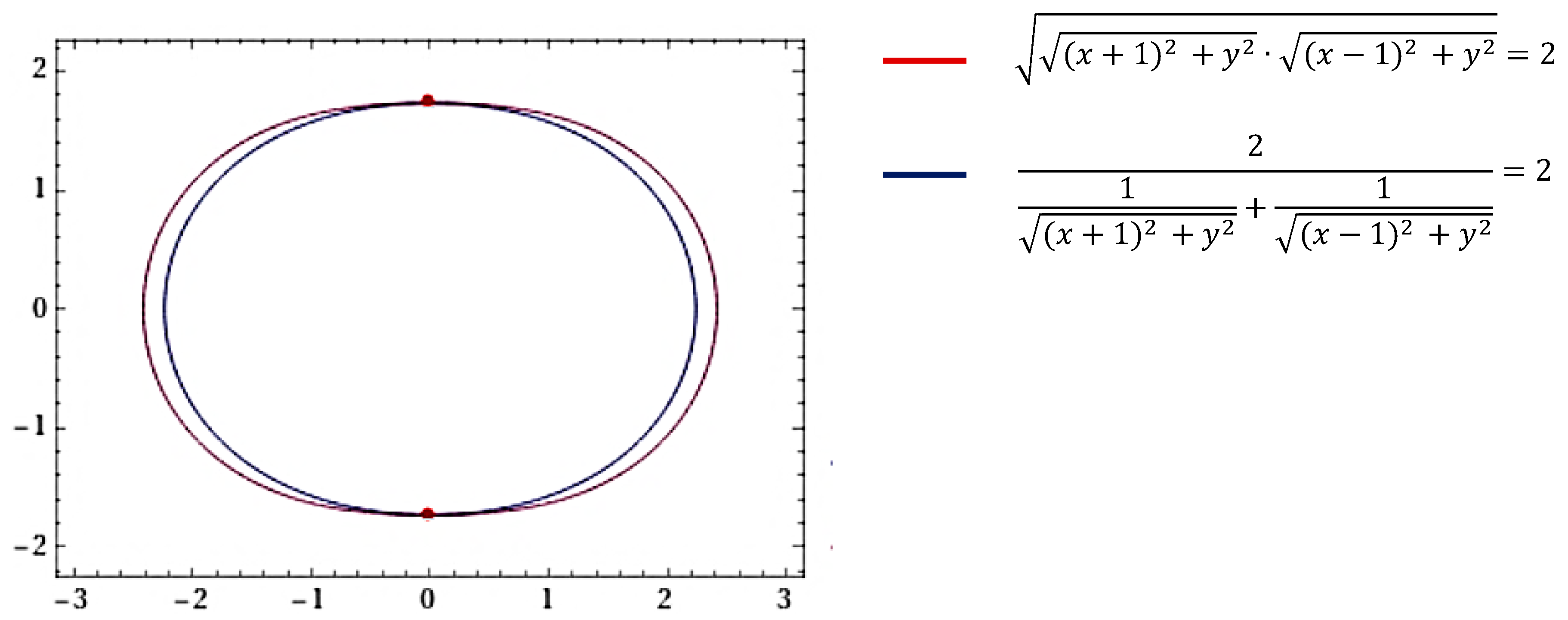
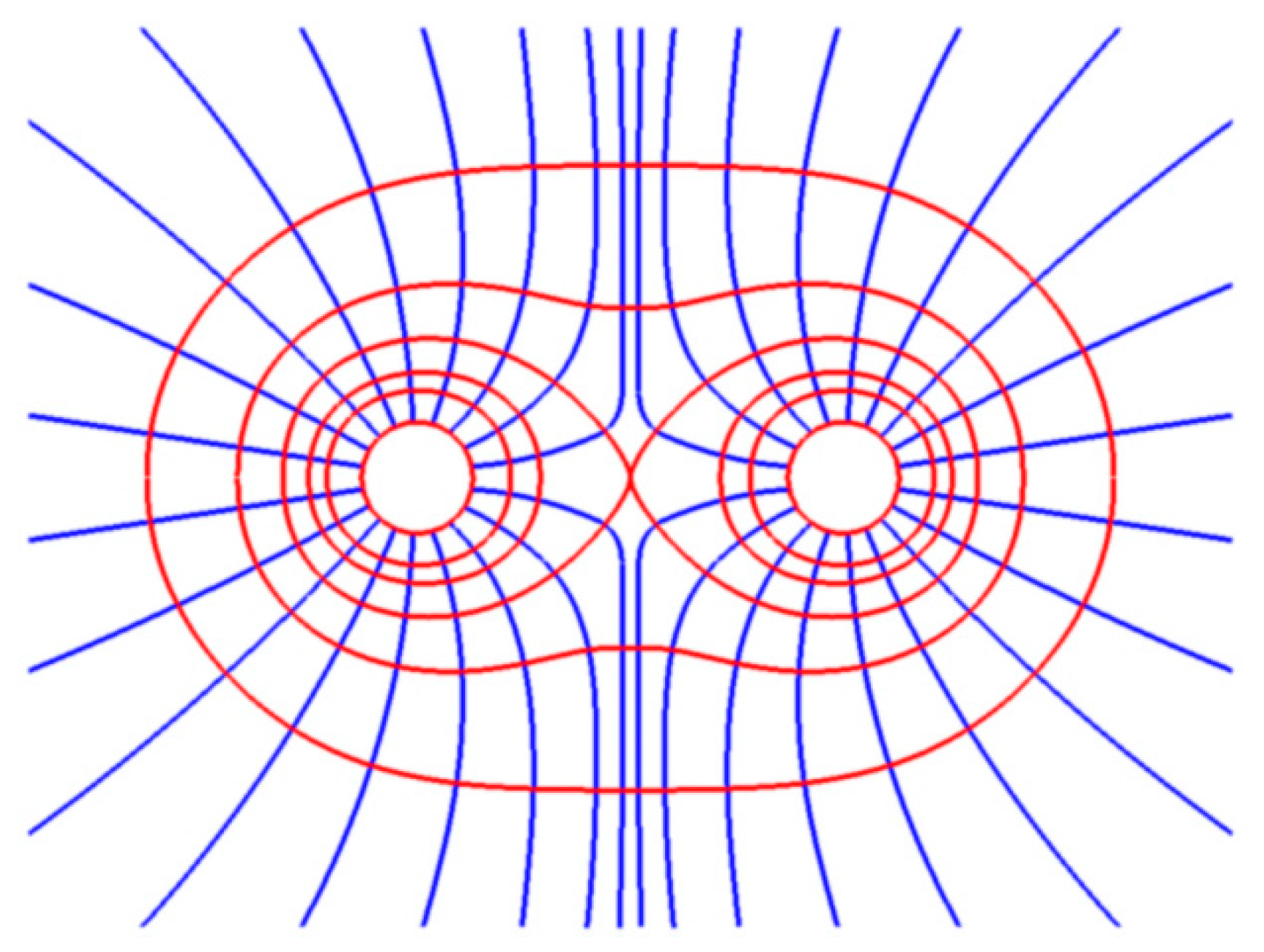

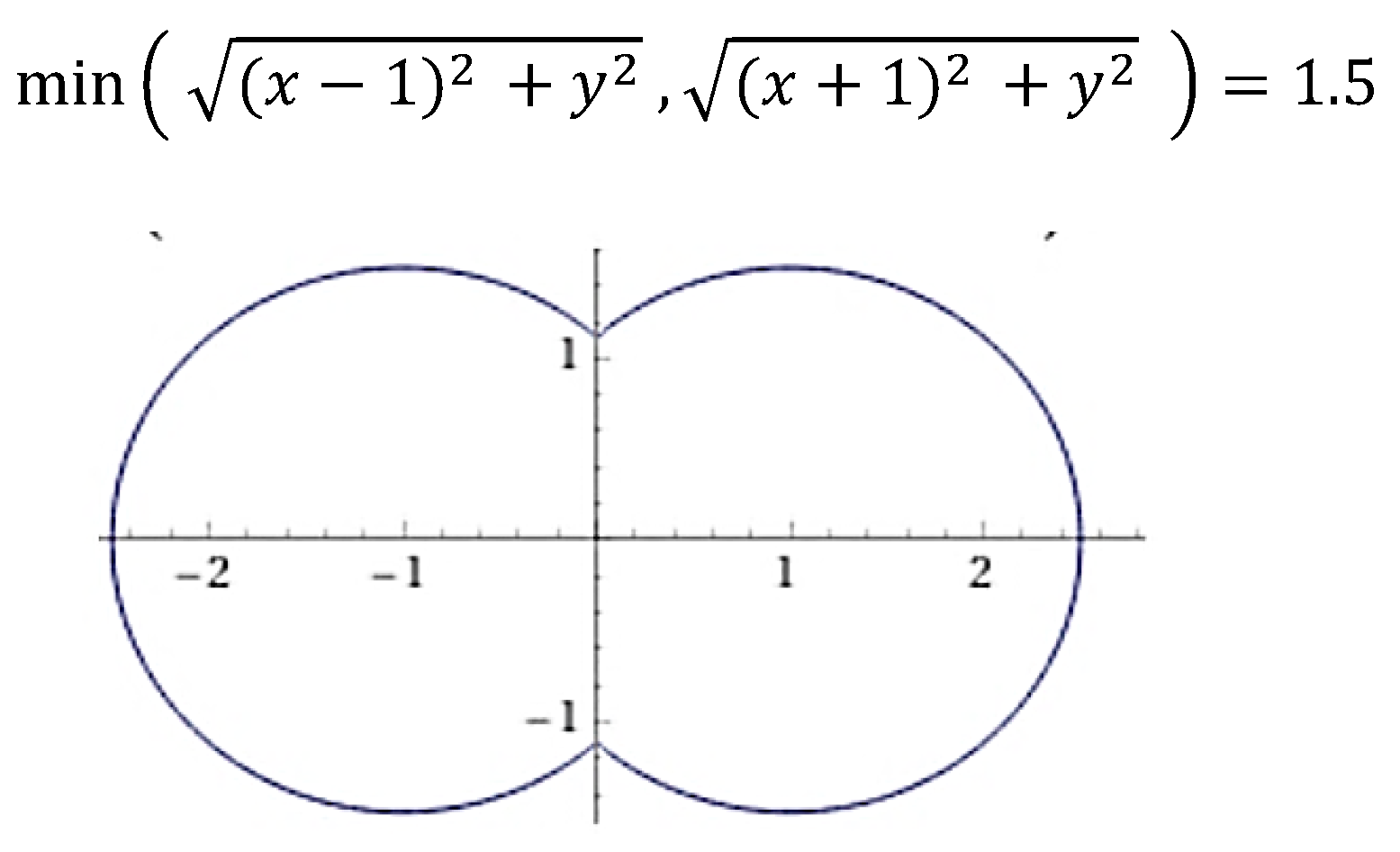
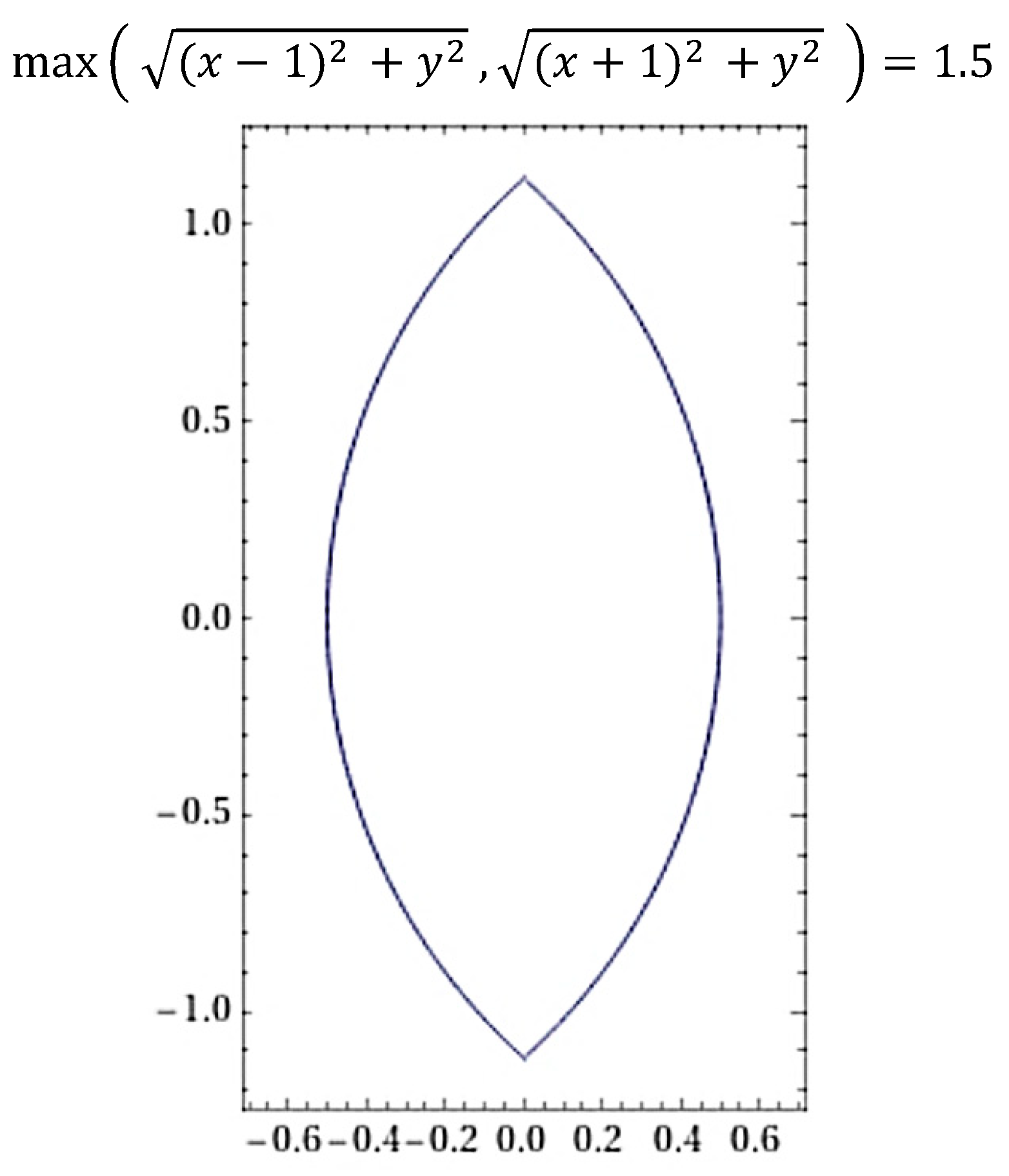


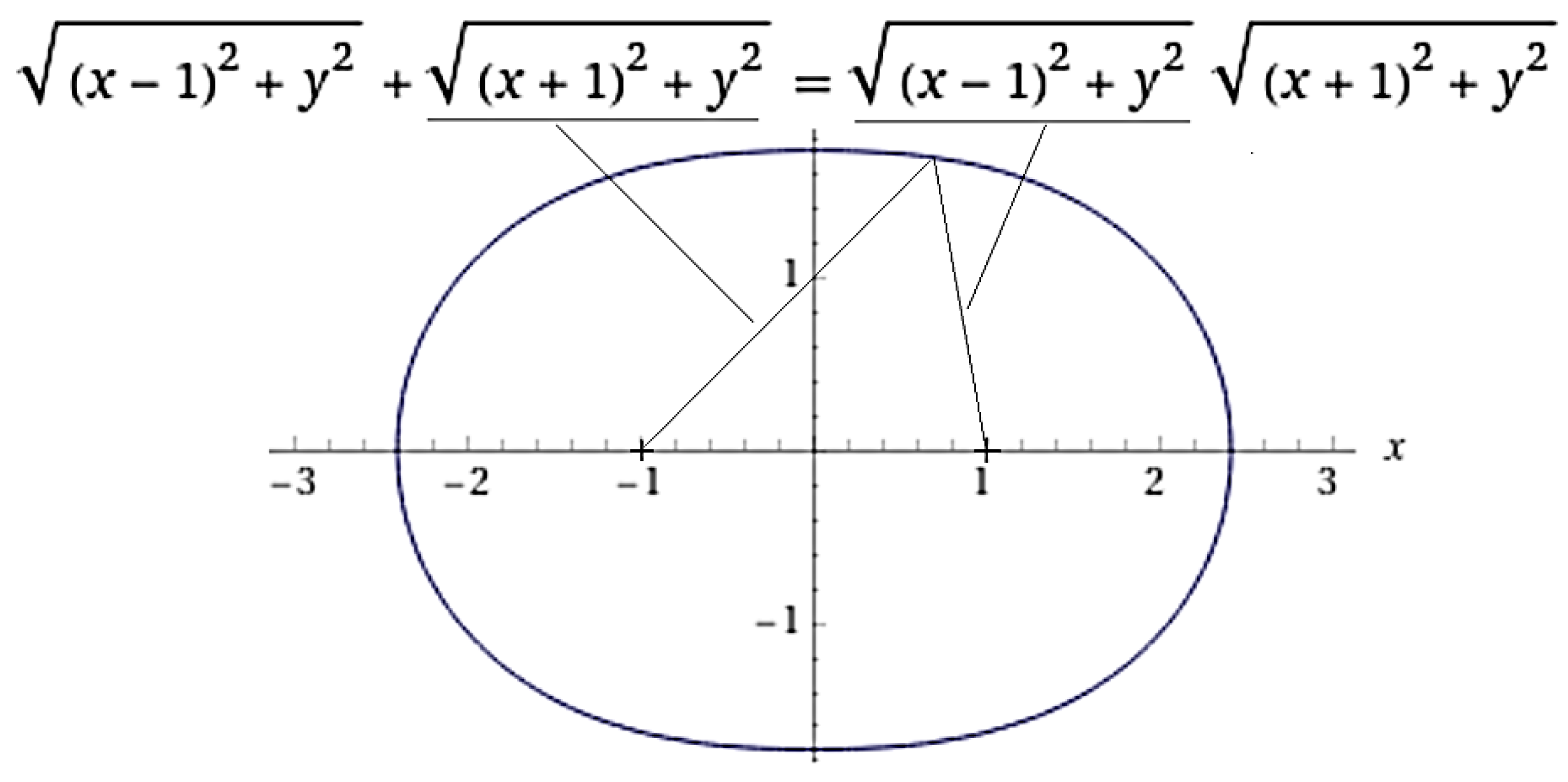
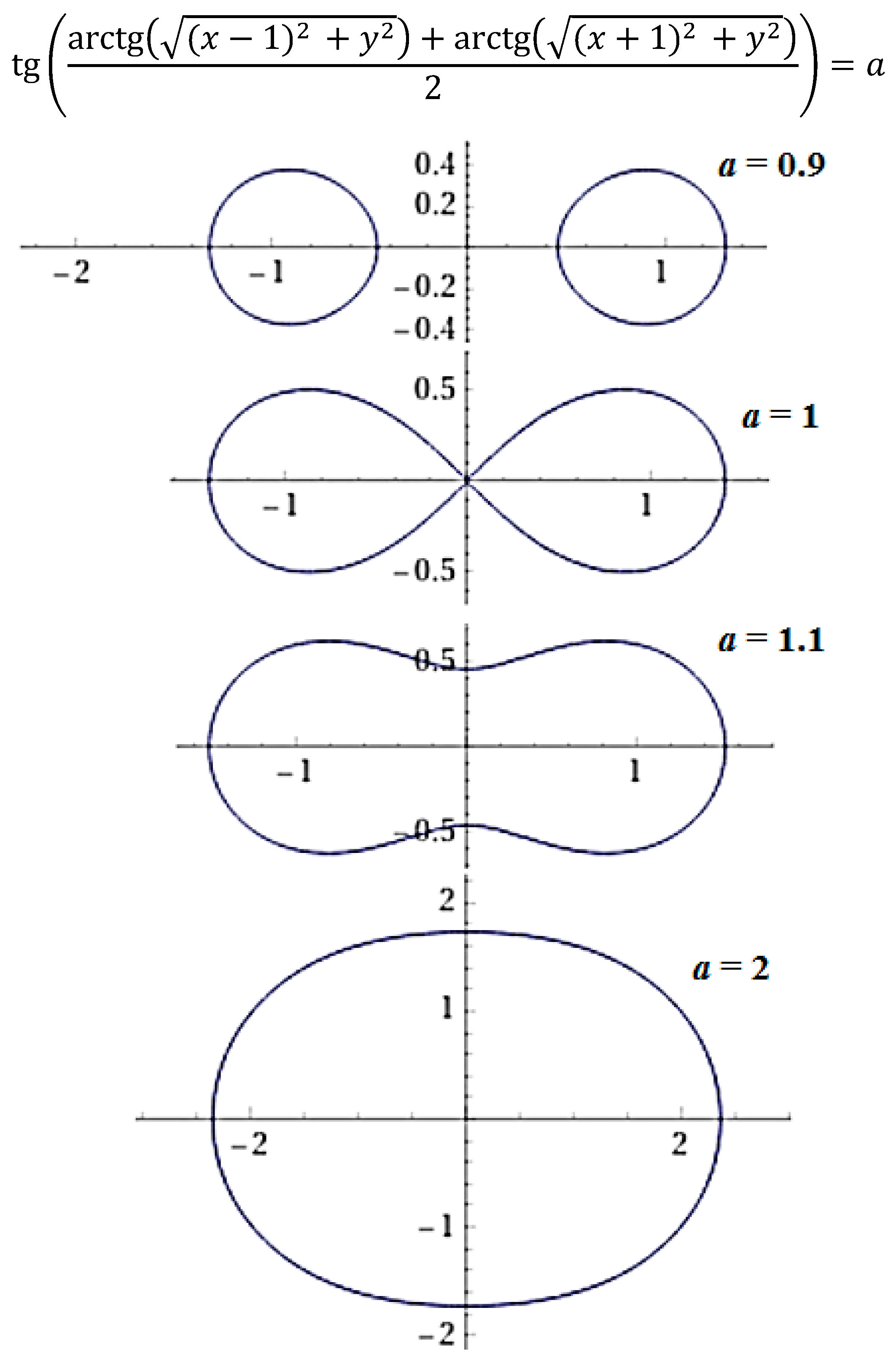



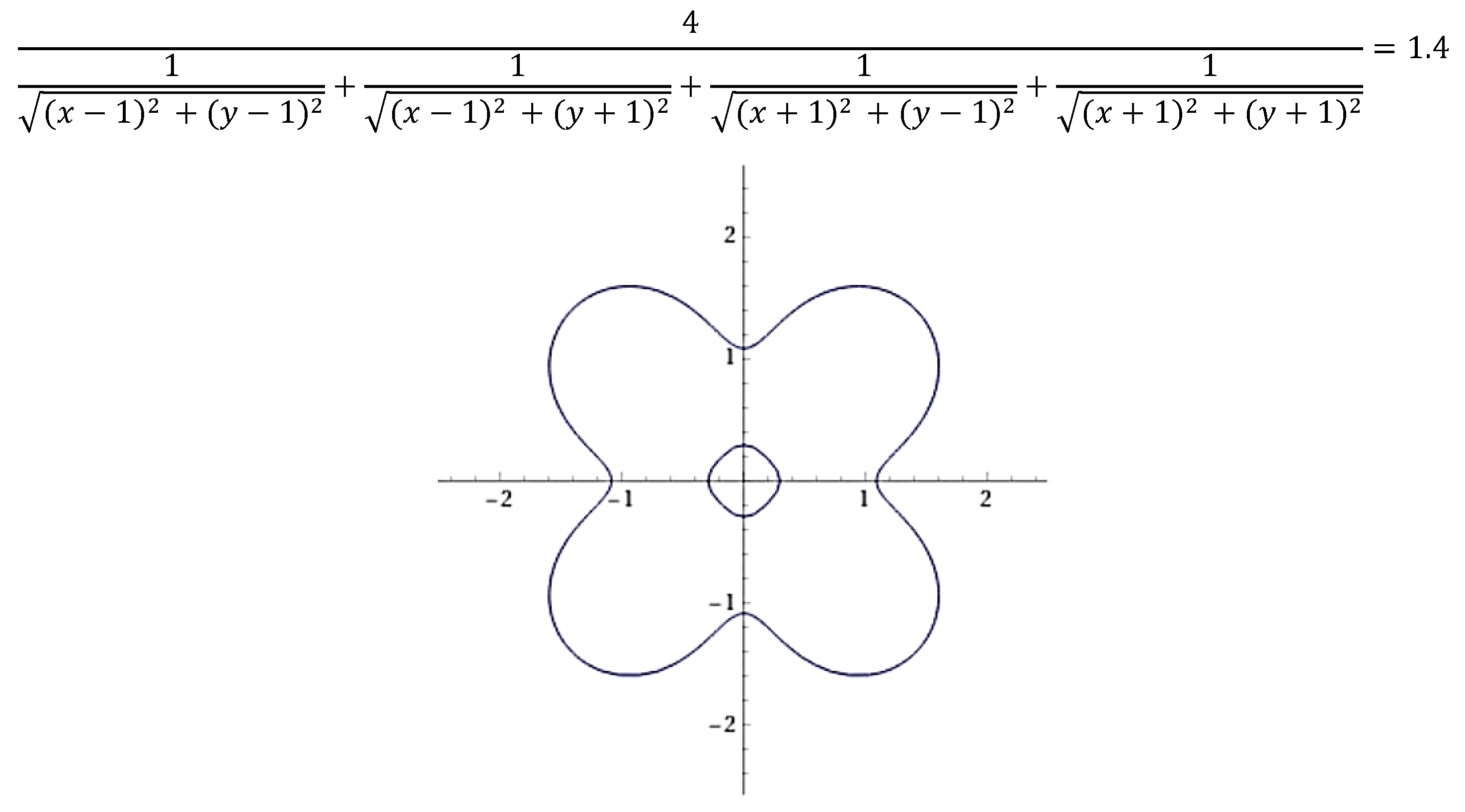
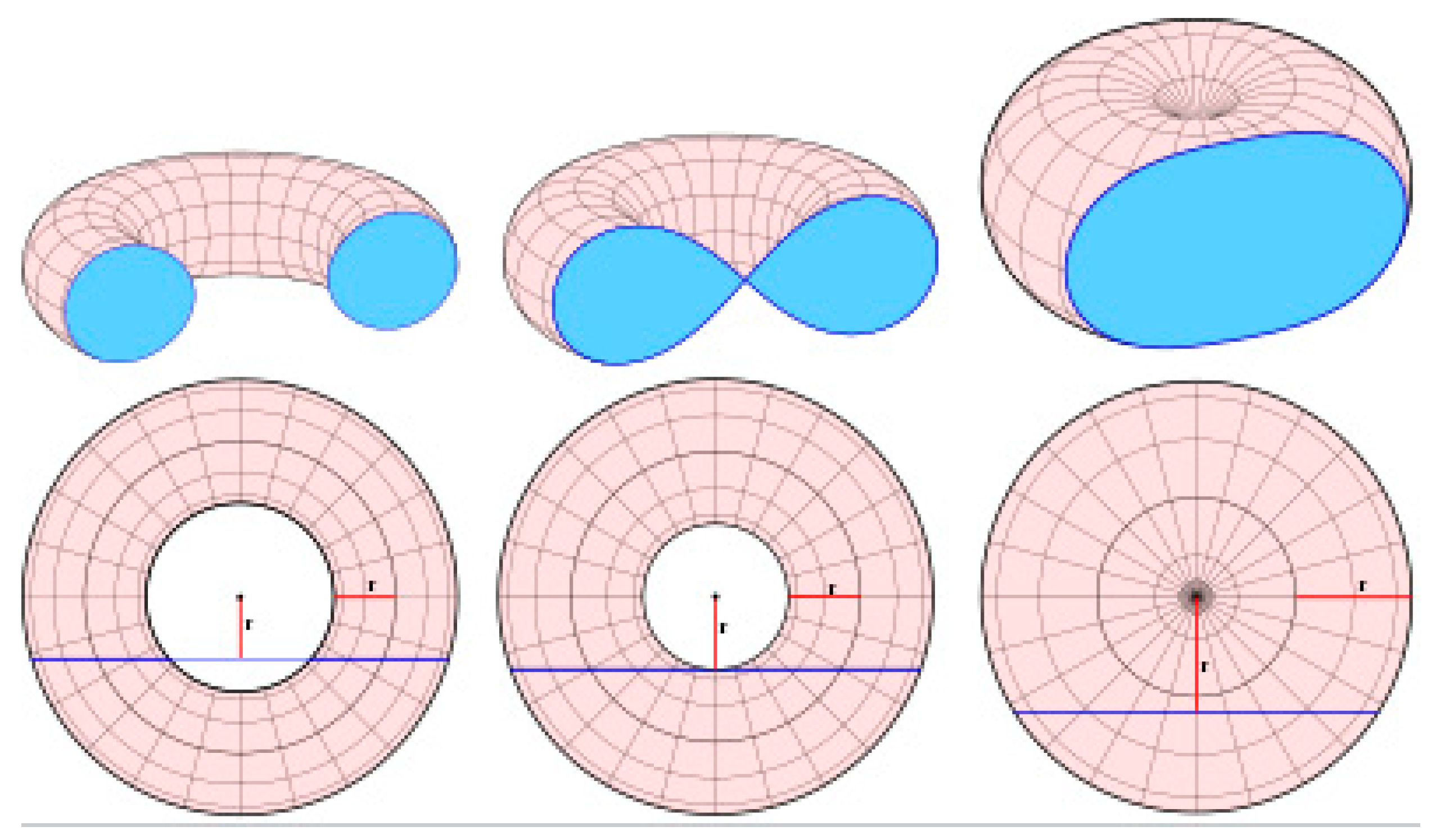
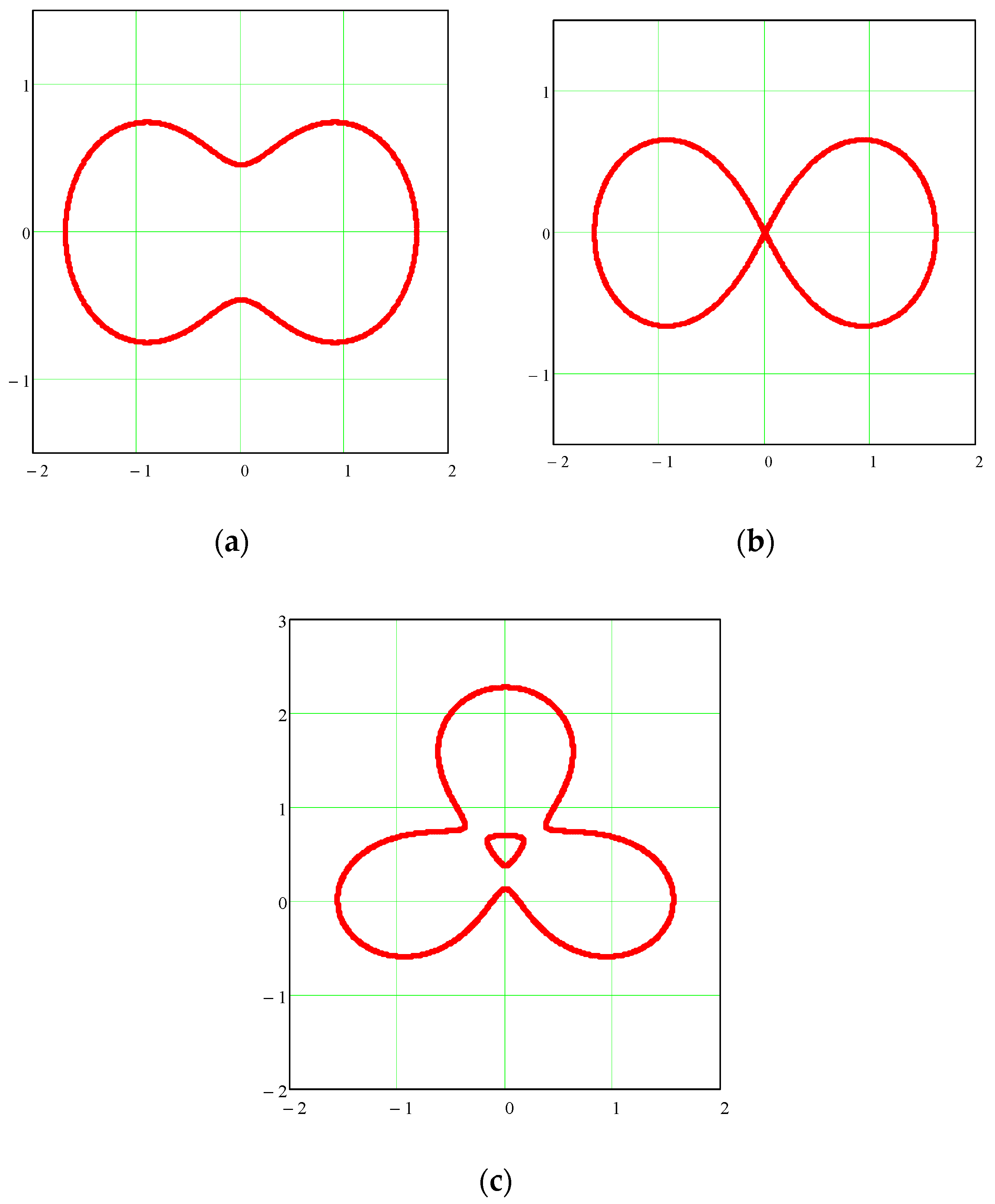
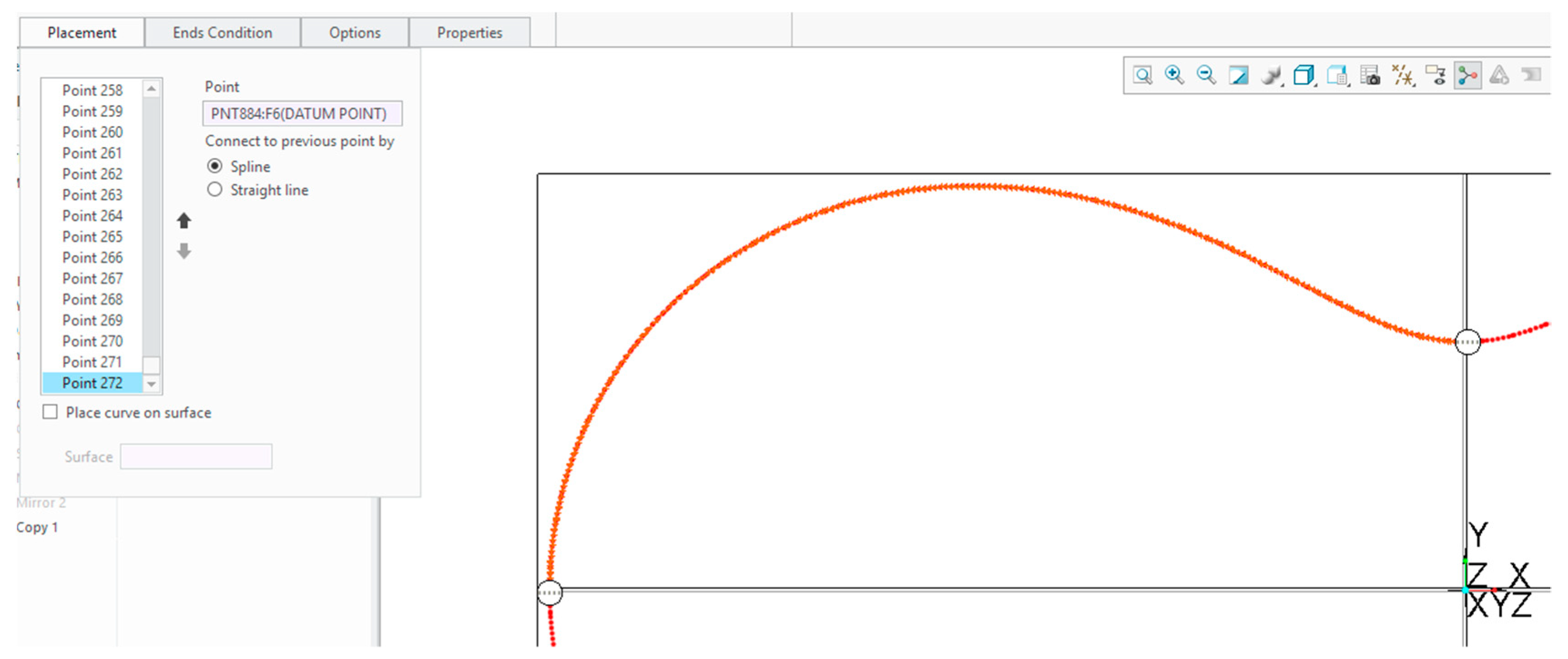

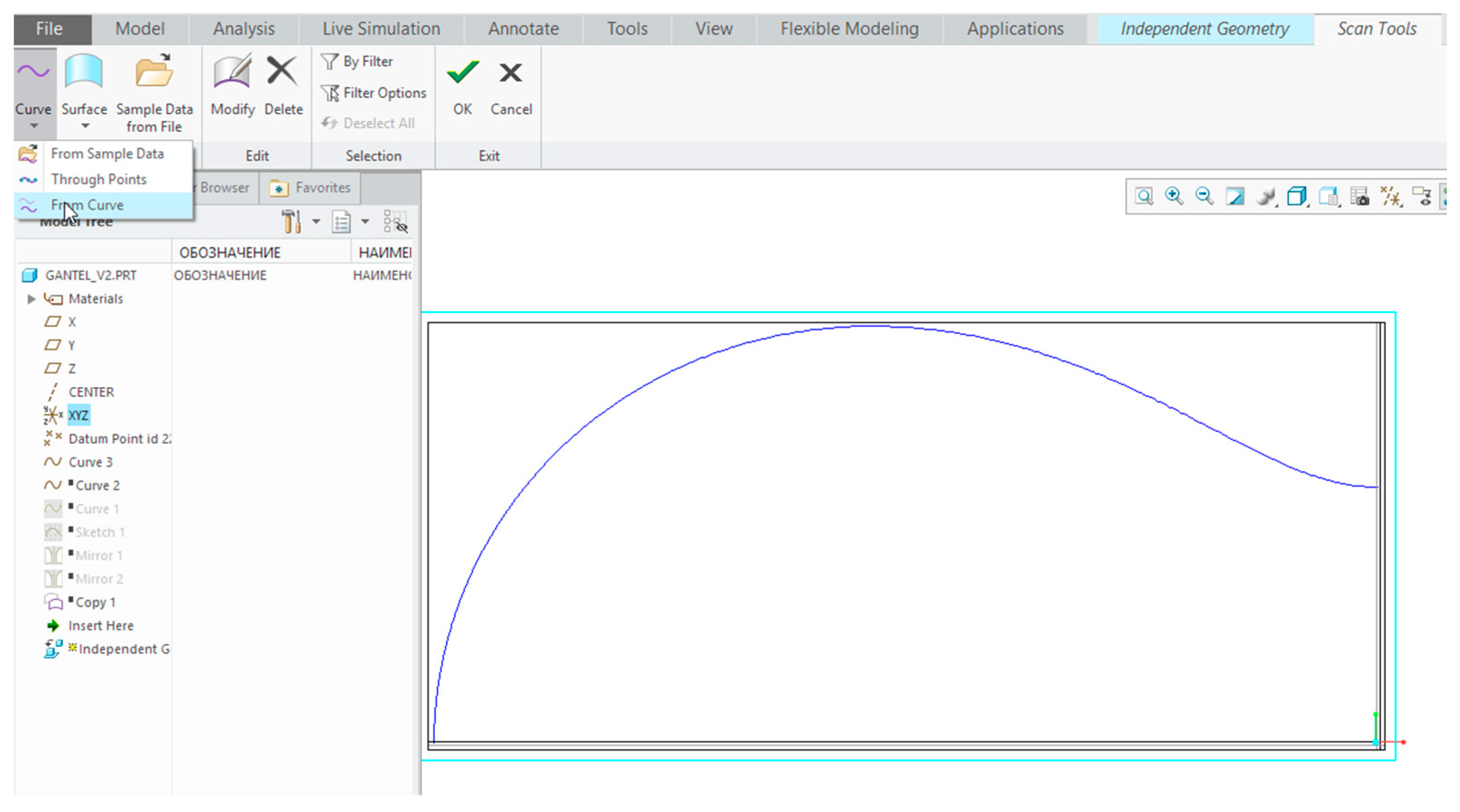




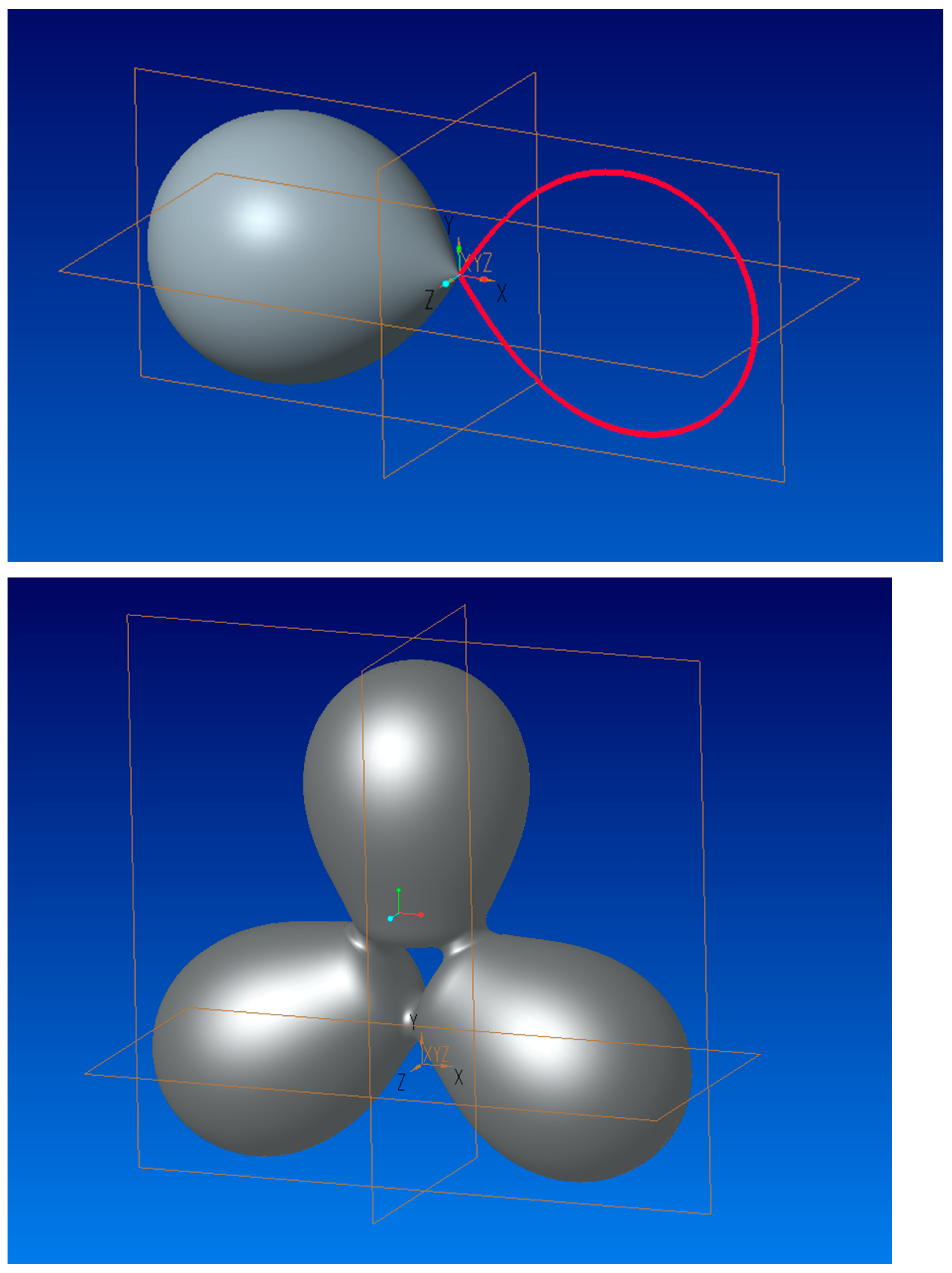
Publisher’s Note: MDPI stays neutral with regard to jurisdictional claims in published maps and institutional affiliations. |
© 2021 by the authors. Licensee MDPI, Basel, Switzerland. This article is an open access article distributed under the terms and conditions of the Creative Commons Attribution (CC BY) license (https://creativecommons.org/licenses/by/4.0/).
Share and Cite
Ochkov, V.; Vasileva, I.; Borovinskaya, E.; Reschetilowski, W. Approximation of Generalized Ovals and Lemniscates towards Geometric Modeling. Mathematics 2021, 9, 3325. https://doi.org/10.3390/math9243325
Ochkov V, Vasileva I, Borovinskaya E, Reschetilowski W. Approximation of Generalized Ovals and Lemniscates towards Geometric Modeling. Mathematics. 2021; 9(24):3325. https://doi.org/10.3390/math9243325
Chicago/Turabian StyleOchkov, Valery, Inna Vasileva, Ekaterina Borovinskaya, and Wladimir Reschetilowski. 2021. "Approximation of Generalized Ovals and Lemniscates towards Geometric Modeling" Mathematics 9, no. 24: 3325. https://doi.org/10.3390/math9243325
APA StyleOchkov, V., Vasileva, I., Borovinskaya, E., & Reschetilowski, W. (2021). Approximation of Generalized Ovals and Lemniscates towards Geometric Modeling. Mathematics, 9(24), 3325. https://doi.org/10.3390/math9243325






